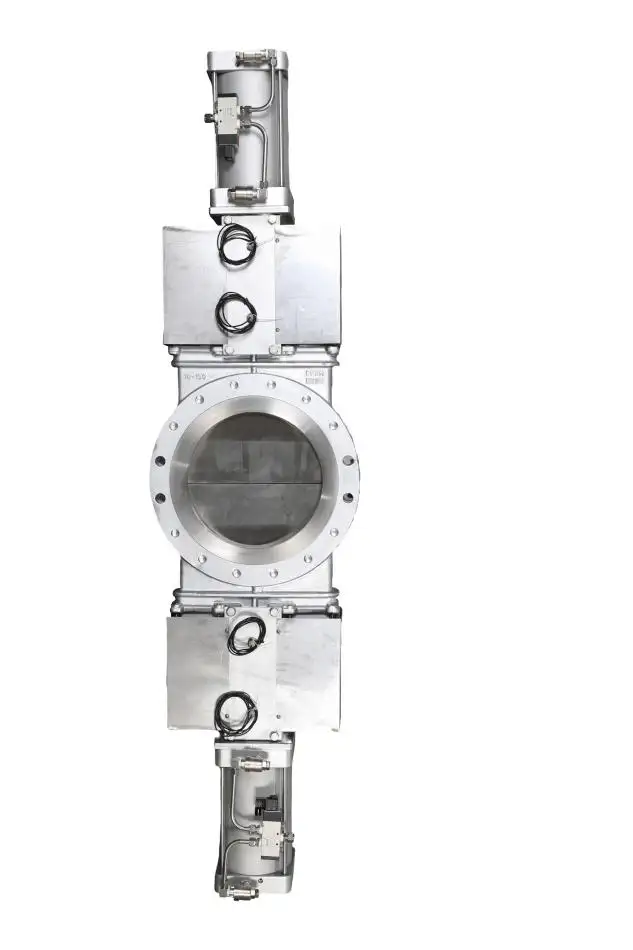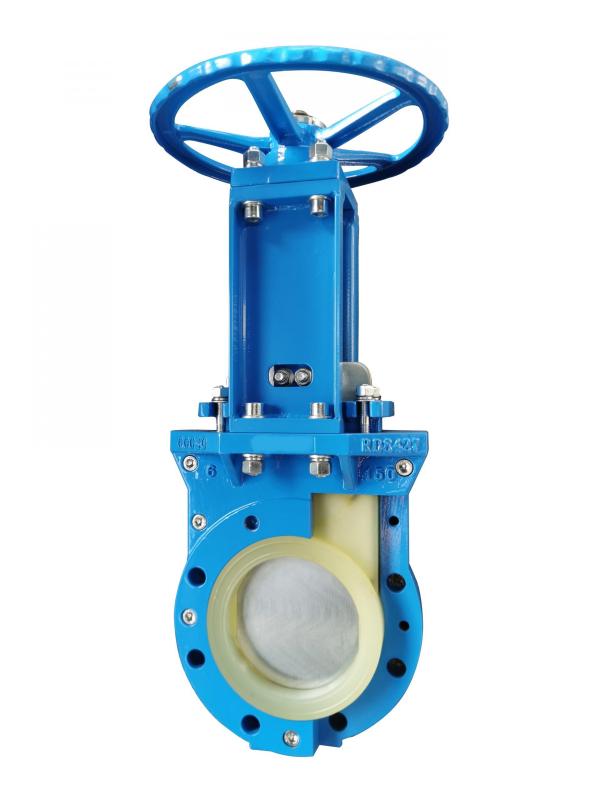Optimizing Wastewater Operations: The Impact of Knife Gate Valves

In wastewater management, efficiency, dependability, and longevity are critical. Treatment facilities encounter distinct hurdles. These include managing corrosive mixtures, guaranteeing leak-proof closure to stop escapes, and reducing upkeep interruptions. Knife gate valves have become a vital solution for these problems. They deliver outstanding performance under tough conditions. This article explores how these valves boost efficiency in wastewater systems. It covers their essential characteristics and why modern treatment plants rely on them.
Understanding Knife Gate Valves in Wastewater Systems
Knife gate valves are specialized devices built to manage dense, sticky, and rough substances. This makes them perfect for wastewater applications. Unlike conventional gate valves, they feature a sharpened edge. This blade slices through mixtures and solids, ensuring smooth function and avoiding blockages. Their sturdy build and corrosion-proof substances suit the severe surroundings of treatment plants well.
Essential Characteristics of Knife Gate Valves
The construction of knife gate valves is fine-tuned for wastewater systems. They provide several benefits that improve operational effectiveness:
- Efficient Mixture Management:These valves excel at handling slurries and solids. They prevent obstructions that could interrupt treatment activities.
- Secure Closure:Their sealing system reduces leakage. This lowers the chance of environmental harm.
- Corrosion Defense:Made from substances like stainless steel, they endure the corrosive wastewater setting.
- Space-Efficient Form:Their compact shape allows easy fitting into intricate pipe networks.
- Minimal Upkeep:The straightforward yet strong design cuts maintenance demands. This reduces stoppages and running expenses.
- Two-Way Sealing:Many offer bidirectional flow control, giving flexibility in system layout.
Why Treatment Facilities Require Knife Gate Valves
Wastewater plants process various difficult substances, from sludge to rough mixtures. Standard valves often fail in these situations. This leads to frequent repairs, escapes, or breakdowns. Knife gate valves solve these problems. They provide sturdiness, dependability, and accurate flow regulation. This ensures continuous operations and adherence to environmental rules.
Boosting Efficiency in Wastewater Systems
Knife gate valves are central to improving wastewater treatment. Their special design and function boost efficiency in multiple ways. This makes them the top choice for plant managers.
Superior Handling of Thick Mixtures
Treatment often involves managing slurries with high solid content. Knife gate valves are made to cut through these substances easily. They prevent jams and ensure steady flow. For instance, during sludge dewatering or transport, the valve’s sharp edge slices through dense material. This maintains consistent movement and lowers blockage risks. This ability reduces interruptions and boosts overall system efficiency.
Lowering Environmental Hazards with Tight Seals
Leaks in treatment systems can cause environmental harm and costly fines. Knife gate valves offer secure closure. This ensures wastewater and sludge stay safely contained. Their two-way sealing ability increases reliability further. It allows flow regulation in both directions. This is especially helpful in complex systems where flow direction might change.
Cutting Maintenance and Stoppages
Upkeep is a major issue in treatment plants. Interruptions can disturb activities and raise costs. Knife gate valves need little upkeep. This is due to their simple build and corrosion-proof substances. For example, valves made from acid-resistant stainless steel or fitted with polyurethane liners resist wear and decay. This extends their lifespan and cuts repair frequency.
Rapid Closure for Increased Safety
In treatment, quick reaction to flow changes is vital for safety and preventing floods. Knife gate valves provide immediate closure. Operators can halt wastewater or slurry flow instantly. This is crucial during emergencies like equipment failures or pipe bursts. Swift action here prevents accidents and environmental harm.
|
Feature |
Benefit in Wastewater Management |
|
Sharp Edge Construction |
Slices through mixtures, stops jams |
|
Secure Closure |
Reduces escapes, ensures rule compliance |
|
Corrosion-Proof Substances |
Extends valve life, lowers upkeep costs |
|
Rapid Closure |
Boosts safety by preventing floods |
|
Space-Efficient Form |
Conserves room in complex systems |
Comparing Knife Gate Valves to Other Valve Types
Understanding why knife gate valves are favored requires comparing them to other common types, like traditional gate valves, butterfly valves, and ball valves.
Knife Gate Valves vs. Traditional Gate Valves
Traditional gate valves are made for clean liquids. They struggle with mixtures and thick substances. Conversely, knife gate valves are specifically built for rough and dense material. They have a shorter face length and are lighter. This makes them better for wastewater jobs. Their ability to cut through solids ensures reliable operation where traditional types may falter.
Knife Gate Valves vs. Butterfly Valves
Butterfly valves are compact and economical. However, their disc form can get blocked by solids, making them less effective for slurries. Knife gate valves, with their sharp edge, handle rough material better without jamming. This makes them a superior option for treatment.
Knife Gate Valves vs. Ball Valves
Ball valves are excellent for clean liquids and high-pressure uses. Yet they are less suited for mixtures. Knife gate valves perform better in wastewater management. They handle dense substances well and provide secure closure in rough conditions.
Installation and Upkeep Best Practices
Maximizing knife gate valve efficiency requires proper fitting and maintenance. Follow these best practices for top performance:
- Simple Fitting:These valves are designed for easy installation. They often need minimal room. Ensure correct pipe alignment to avoid stressing the valve body. Flangeless or wafer-style units are particularly easy to fit between pipe flanges.
- Regular Upkeep:Follow a proactive maintenance plan. This includes periodic checks, cleaning, and lubrication. Inspect seal condition and actuator function to stop leaks or operational problems.
- Solving Common Problems:Address issues like leakage or blockages quickly. For example, if a valve doesn’t close fully, check for gate path obstacles or worn seals. Regular monitoring prevents disruptions to treatment activities.
Safety and Environmental Advantages
Knife gate valves greatly aid safety and environmental protection in treatment plants. Their tight sealing stops leaks and spills. This reduces environmental harm risk. Also, their ability to handle rough material safely lessens accident potential. This creates a safer workplace for operators. By optimizing flow control, they boost treatment efficiency too. This ensures wastewater is processed effectively before release.
Choosing the Correct Knife Gate Valve
Selecting the right valve for a treatment plant needs careful thought on several points:
- Substance Suitability:Pick valves made from corrosion-proof substances like stainless steel. They withstand the severe wastewater surroundings.
- Substance Type:Consider the slurry or material being processed. Include particle size and thickness. This ensures the valve meets specific demands.
- Pressure and Heat:Verify the valve’s pressure and heat limits match the system’s operating state.
- Actuation Technique:Choose between manual, air-powered, or electric actuators. Base this on automation needs and remote function.
- Supplier Dependability:Work with a trusted provider offering high-standard valves, technical know-how, and dependable help.
Miwival: Your Reliable Knife Gate Valve Provider

Miwival is a top source for valve solutions. It offers a full range of high-performing knife gate valves designed for wastewater management. Committed to excellence, innovation, and client contentment, Miwival’s items are built for treatment plants’ tough demands. Their valves use corrosion-proof substances and advanced sealing tech. This ensures sturdiness and effectiveness. Miwival’s global presence and skilled team provide tailored assistance. This makes them a trustworthy partner for wastewater facilities everywhere.
Final Thoughts
Knife gate valves are essential in wastewater management. They offer exceptional effectiveness, dependability, and sturdiness. Their ability to handle mixtures, give tight closure, and reduce upkeep makes them fundamental to modern treatment plants. By choosing high-standard valves from reliable sources like Miwival, managers can improve their processes. They boost safety and guarantee rule adherence. As wastewater treatment needs grow, knife gate valves will stay a key solution for operational superiority.
Common Questions
What is a knife gate valve, and how does it boost efficiency in wastewater systems?
A knife gate valve is a specialized device with a sharp edge. It cuts through mixtures and thick material. It boosts efficiency by stopping jams, giving tight closure to reduce escapes, and cutting upkeep needs. This ensures smooth and dependable function.
Why are knife gate valves chosen over others in wastewater treatment?
They are chosen because they handle rough slurries and thick substances without jamming. Unlike butterfly or ball valves, they perform better in severe wastewater surroundings. Features like corrosion defense and two-way sealing add to this.
How often should knife gate valves be maintained in treatment plants?
Upkeep frequency depends on operating states. However, a proactive plan with regular checks, cleaning, and lubrication every 6-12 months is advised. This ensures best performance and extends valve life.
Can knife gate valves manage high-pressure wastewater uses?
Yes, they can be built for high-pressure uses, but they are not suitable for high-pressure conditions. But it’s vital to pick a valve with suitable pressure ratings. Consult suppliers like Miwival to ensure the valve fits your system’s specific pressure and heat needs.
What substances are ideal for knife gate valves in wastewater management?
Corrosion-proof substances like stainless steel or polyurethane-lined valves are best. They endure the corrosive and rough nature of wastewater, guaranteeing long-term sturdiness.





